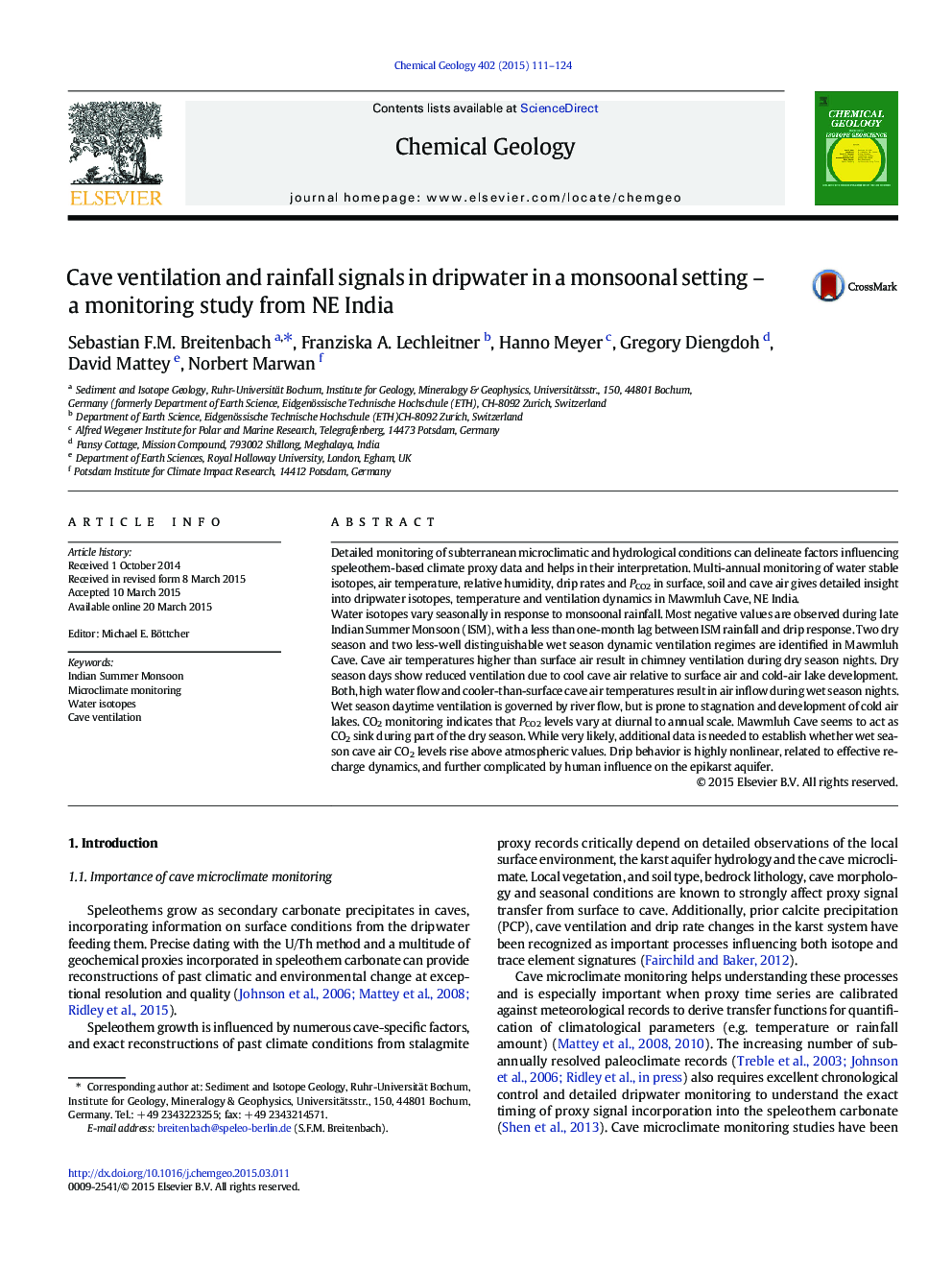| کد مقاله | کد نشریه | سال انتشار | مقاله انگلیسی | نسخه تمام متن |
|---|---|---|---|---|
| 4698553 | 1637571 | 2015 | 14 صفحه PDF | دانلود رایگان |

• Mawmluh Cave dripwater bears monsoonal rainfall signal.
• Ventilation depends on surface-cave temperature gradient and river flow.
• Dry season cave air CO2 is closely linked to gas transport via entrances and less to soil air CO2.
• Evidence suggests anthropogenic impact on aquifer, temperature, and ventilation dynamics.
Detailed monitoring of subterranean microclimatic and hydrological conditions can delineate factors influencing speleothem-based climate proxy data and helps in their interpretation. Multi-annual monitoring of water stable isotopes, air temperature, relative humidity, drip rates and PCO2 in surface, soil and cave air gives detailed insight into dripwater isotopes, temperature and ventilation dynamics in Mawmluh Cave, NE India.Water isotopes vary seasonally in response to monsoonal rainfall. Most negative values are observed during late Indian Summer Monsoon (ISM), with a less than one-month lag between ISM rainfall and drip response. Two dry season and two less-well distinguishable wet season dynamic ventilation regimes are identified in Mawmluh Cave. Cave air temperatures higher than surface air result in chimney ventilation during dry season nights. Dry season days show reduced ventilation due to cool cave air relative to surface air and cold-air lake development. Both, high water flow and cooler-than-surface cave air temperatures result in air inflow during wet season nights. Wet season daytime ventilation is governed by river flow, but is prone to stagnation and development of cold air lakes. CO2 monitoring indicates that PCO2 levels vary at diurnal to annual scale. Mawmluh Cave seems to act as CO2 sink during part of the dry season. While very likely, additional data is needed to establish whether wet season cave air CO2 levels rise above atmospheric values. Drip behavior is highly nonlinear, related to effective recharge dynamics, and further complicated by human influence on the epikarst aquifer.
Journal: Chemical Geology - Volume 402, 8 May 2015, Pages 111–124